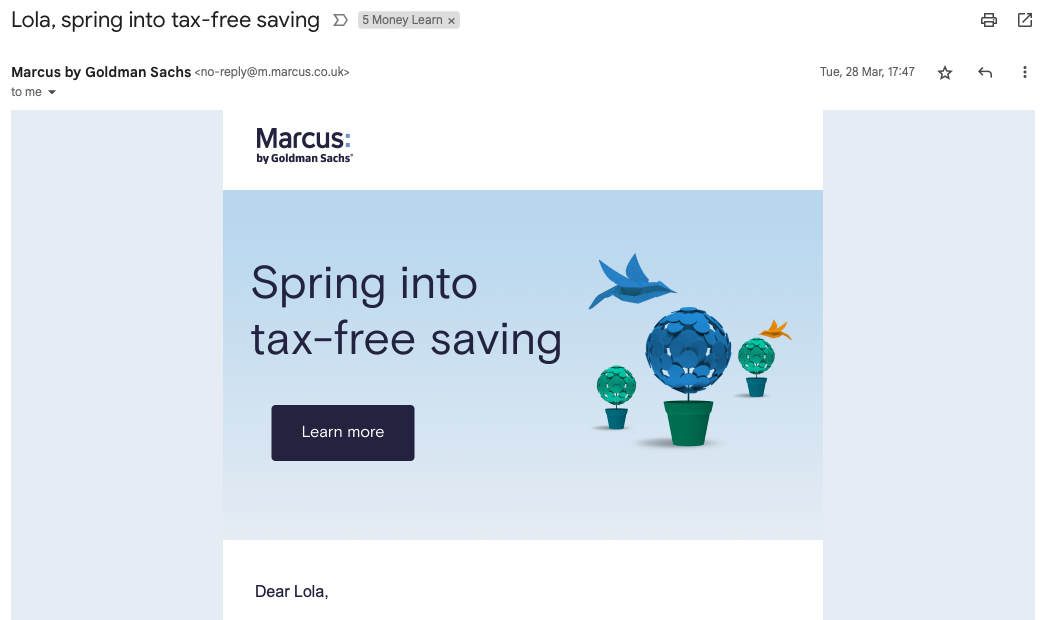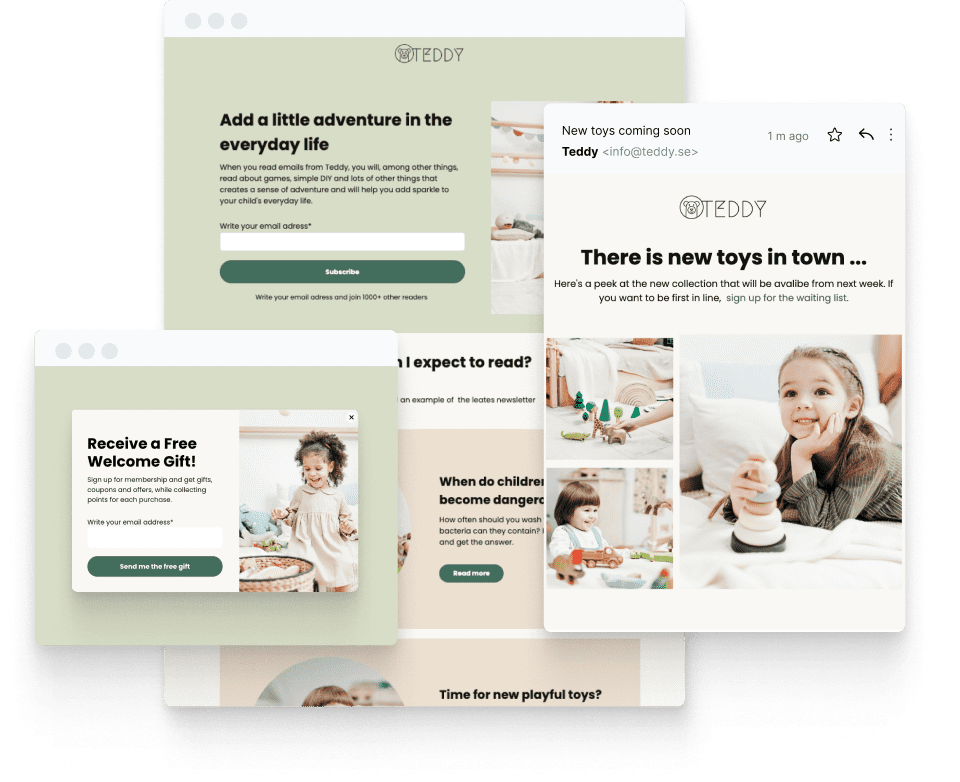As a marketer, you likely juggle many marketing channels. And you know that when executed correctly, email can be highly effective.
You might send out personalized messages to existing customers or emails to inform potential customers of a new product. Either way, emails are an excellent tool for communication and marketing.
You might have created or inherited an informational newsletter and poured your heart into optimizing its content, only to have a fraction of the target audience open it. It’s an all-too-common situation, and it’s frustrating.
So how do you increase open rates for your newsletters? How do you ensure the time and effort you spend won’t be wasted? This article will explore proven strategies to make your emails more compelling so more people open and read them.
What are Newsletter Open Rates?
A newsletter open rate indicates how many people open and read your newsletter. Marketers use this performance metric to evaluate and optimize email performance.
Each industry has its own benchmark. In 2022, the average newsletter open rate for all industries was 21.5%.
9 Proven Strategies to Increase Email Open Rates
Email is a personal and low-cost marketing channel. But with billions of emails sent every year, the reality is many subscribers will mass delete emails. So how can your newsletter stand out? As with everything in marketing, the first step is understanding your target audience.
1. Know Your Customers
Successful marketers know their target audience well. This includes their location and demographics, specific preferences, and behavior. To make your campaign relevant, you need to understand your target audience.
For example, if your company sells domain names and you want to explain what a domain name is and how to find one in your newsletter, you will want to target only customers who do not have a website.
For a customer to open your email, they need to see it as relevant, useful, and worth their time.
2. Focus on Quality, Not Quantity
If you’ve been focusing efforts on obtaining as many email addresses as you can, and a large number of your emails aren’t being opened, it could be impacting your business in more ways than you realize.
Many email service providers monitor low-performance campaigns. So if you send emails with low open rates, it may affect the overall deliverability of your emails and future open rates.
In order to improve your email list quality, start by removing inactive subscribers. This is an immediate, easy-to-implement way to increase open rates. You could also use an email list cleaning service to remove invalid and temporary emails.
To futureproof the quality of your email list, go for double opt-in when customers sign up for your newsletter. Single opt-in may seem more straightforward, but the second step ensures only those who really want to receive your newsletter get it, leading to a higher quality list.
This may all sound overwhelming but using email newsletter software, like Get a Newsletter will save you significant time and energy. Many have common features, but look for one that also incorporates list management and cleaning tools.
3. Personalize Your Emails
Your organization collects a significant amount of customer data daily. From sending out feedback forms to conducting calls through your omnichannel contact center solution, every interaction enables you to learn more about your customers.
With customer data, you can segment your audience based on their needs, characteristics, and behaviors, then send them relevant, personalized informational newsletters.
As a minimum, it’s email marketing best practice to use a customer’s name in the subject line and main body copy to add a more personal touch.

Marketing-savvy organizations take personalization to the next level and use email automation to personalize newsletters based on customer behavior – for example, an offer to complete a transaction when an item is left in the basket.
If you work in multiple markets, investing in local domains could enhance personalization further. For example, you could use Malta domains to send a newsletter to your Maltese customers rather than a generic .com email.
4. Design for Mobile
What devices do your customers use when they open your email newsletter? According to research from HubSpot, the majority of emails are viewed on mobile devices. The younger your target audience, the more this will be the case.
Most email automation platforms allow marketers to preview how the email will look on various devices. But it’s also crucial to test this by sending and reviewing your newsletter in key email clients that your customers use (e.g. Gmail or Outlook). Outlook, in particular, can suppress images and interfere with formatting.
Large images can cause emails to load more slowly on mobile. So reduce the number or size of any heavy visual elements in your newsletter.
5. Nail the Timing and Frequency

What is the best time to send your newsletter? How often should you send it? Once a week? Daily?
Marketing automation platforms usually offer prompts, however the best approach is to conduct A/B tests. Your audience and marketing approach are unique, so you need to continuously test when and how often to send emails. This way, you learn what works best for your audience.
6. Thou Shalt Not Spam
Long gone are the days when all emails went into the same inbox. These days, email marketers have to contend with email filters, spam, and promotional folders.
The best way to ensure that your email newsletter doesn’t land in a promotional or spam folder is to use a reputable email service provider and follow their best practices. This might include security protocol authentication, using a personalized sender name, and writing the subject line and email body copy so they don’t appear as spam.
Always include an unsubscribe link in your emails and make sure that your unsubscribe journey is straightforward.
7. Write Clear, Captivating Subject Lines
Just like one decides whether to enter a shop based on the store front, most people decide whether to read or delete an email based on its subject line. To increase email open rates, write clear, concise, relevant subject lines that make your email stand out.
The best subject lines are short but informative and act like a hook to entice the reader to open and read the email. Best practice is to avoid too many special characters, emojis, or jargon and limit the subject line length to 7-10 words.

The subject line must be relevant to the audience and use their language. Keep in mind that sentence case is best, as capitalization may trigger spam filters.
Here are two excellent examples of a powerful subject line: “9 proven strategies to increase email open rates” or “5 point plan for a successful hybrid cloud integration”.
Including an offer into the subject line works well too. However, avoid words that can trigger spam filters, such as “free”, “sale”, “save”, and “deal”. And of course, you should test various subject lines to see what works for your audience.
8. Craft Excellent Copy
It goes without saying that if your newsletter made it through the spam filters into your customers’ inbox, enticed them to open it, and then you failed to deliver relevant, useful, interesting content that was worth their time, this would impact your future open rates.
The key to writing engaging email copy is to keep it short, avoid complex or overly formal language, and write as if you are talking to your reader in real life. Very few people read emails these days; most scan them.
Whether your informational newsletter is about ways to save the planet or how to use secure eFax, include short paragraphs of punchy text that gets straight to the point. Keep your target audience in mind – use their language and your knowledge of what may be relevant and interesting to them.
9. Provide a Clear Call-to-Action
Ultimately, the goal of any email is to deliver business results. The goal of an informational newsletter is awareness and education so the call-to-action (CTA) may invite readers to learn more about your company or product.
The CTA has to be compelling enough to lead to a clickthrough. For example, if your company sells domains to the AI sector, your CTA may be “Where to buy .ai domains.”
Again, always test to see what works for your audience and brand.
Open Sesame
Hate it or love it, email is one of the main ways we communicate with loved ones, colleagues, and brands.
The key to creating great emails that your customers want to open and read is to know your customers, get the email basics right, and write compelling copy that stands out and captivates the reader.
Follow these proven strategies and you’ll soon see your open rates improve. Remember to continuously test different approaches. If you keep your audience in mind and deliver content they want to engage with, you’re sure to see results.
Get started with email marketing
Create beautiful email newsletters for free with Get a Newsletter and reach your subscribers and customers in a heartbeat.


Leave a Reply